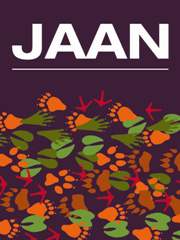Article contents
Effects of nutrient variability in corn and xylanase inclusion on broiler performance, nutrient utilisation, and volatile fatty acid profiles
Published online by Cambridge University Press: 17 January 2018
Abstract
The objective of the trial was to determine the impact of corn source and xylanase on broiler performance, digestibility, and volatile fatty acid (VFA) profiles. Six corn samples were obtained from different regions of the US. Twelve treatments were derived using corn source, with each corn diet being fed with or without xylanase. Three dietary phases were used throughout the trial, starter (d 1–18), grower (d 19–31), and finisher (d 32–41). On d 18 and 41, ileal and excreta contents were collected for the determination of ileal digestible energy (IDE), ileal energy and nitrogen digestibility coefficients (IEDC and INDC), apparent metabolisable energy (AME), and caecal VFA profiles. Day 18 body weight (BW) was affected by corn source and varied between 724 and 764g (P = 0.001). For d 31 BW, there was an interaction of corn source with xylanase (P = 0.001), with the effect of xylanase being inconsistent. The effect of xylanase on feed conversion ratio (FCR) during the grower phase depended on corn source (interactive term, P = 0.021). Xylanase reduced (P = 0.026) FCR during the finisher phase (1.943 vs. 1.992). Variation of corn source influenced digestibility on all evaluated parameters. A range of 152 and 213 kcal/kg for IDE was observed on d 18 and 41, respectively (P = 0.005 and 0.001). The range of AME was 176 kcal/kg on d 18 of age which increased to 194 kcal/kg on d 41. Nitrogen digestibility was influenced by corn source, with an observed range of 4.4 and 6.1% for d 18 and 41, respectively, amongst all corn sources (P = 0.001). Xylanase increased (P = 0.031) the concentration of butyrate in the caecum on d 18. On d 41, an interaction between corn source and xylanase was observed with isovalerate in the caecal contents (P = 0.038). These data demonstrate the impact of varying corn nutrient profiles on nutrient utilisation and growth performance.
- Type
- Original Research
- Information
- Copyright
- Copyright © Cambridge University Press and Journal of Applied Animal Nutrition Ltd. 2018
References
- 8
- Cited by


